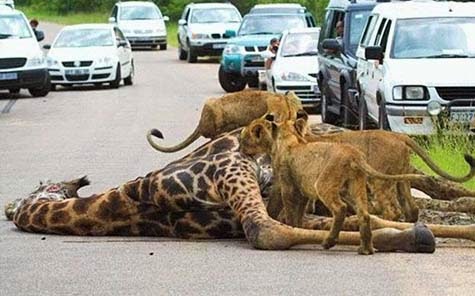So Who Did It Right?
Currently Facebook and Twitter are ablaze with posts about Copenhagen Zoo's plans to cull a young Giraffe and the news that Longleat Safari Park had recently culled some Lions.
http://www.bbc.co.uk/news/world-europe-26098935
http://www.dailymail.co.uk/news/article-2554916/Outrage-lioness-cubs-pride-Longleat-leaving-staff-tears.html#ixzz2snbPyHH1
Copenhagen announced their plans in advance and Longleat just went ahead and did it. What was the right approach? Going by the statements made on the internet I believe that Longleat probaby made the right move. It is too late now to have ridiculous offers to 'save' the animals concerned.
In the modern good zoo the species are managed through specimens. No-one would dispute that zoos and their staff care and love the animals they manage but people really do need to see the bigger pictures.....and sadly this includes a lot of ZooKeepers. Euthanasia, Killing, Culling is an important and necessary management tool.
I have tried to quell the online debates by posting links to:
and
The Good Zoo and Euthanasia
But it has not made a ha'penny worth of difference because the commenters cannot be bothered to read either article. If they did then perhaps they might understand a little better why both collections considered the action they did.
I am surprised to see so many zoo staff making statements which, to be frank, suggest that they really have no understanding of what the good zoo is all about.
Perhaps then Copenhagen was right. Their action has sparked debate and perhaps, just perhaps some people will learn from it. Some zookeepers will have to take their blinkers off first or they will be no better off than the ARA's.

I understand that zoos manage their populations. But I don't understand why the zoos have to mimic the role of nature in culling these animals. If zoos want to truly mimic nature they should just let species go extinct and give up on management. One purpose of the zoo is to push back on the natural order of extinction, perhaps as a method of assuaging human guilt for our role in these events, perhaps as a means to keep biodiversity strong for our own preservation. But a zoo killing an animal as a means of "simulating nature" makes little sense to me in the face of the other role a zoo has: to educate and inspire people. Maybe this male giraffe's DNA is not needed but his role as an ambassador of his species still is. He could have gone to another zoo, been part of a display, never bread and lived out his life making the case for conservation in a place where people can't see these animals. Zoos were offering to take him, in fulfilling this other role, how exactly are these arguably less Darwinian zoos, "Bad zoos"?
ReplyDeleteWorking with marine mammals you would never cull a non-breeding individual. It violates the marine mammal protection act and would invite 10 times the media backlash this story is getting. Zoos who deal with elephants, non-human primates and marine mammals know the kind of media attention a death of any one of these animals brings, and to intentionally cause a death in a healthy animal would be the end of that zoo. With increased attention on practices and an increasing animal rights movement that sees all captivity as evil, zoos have a responsibility to act like every life under their care is special, even the genetically unnecessary ones.
I understand that zoos manage their populations. But I don't understand why the zoos have to mimic the role of nature in culling these animals. If zoos want to truly mimic nature they should just let species go extinct and give up on management. One purpose of the zoo is to push back on the natural order of extinction, perhaps as a method of assuaging human guilt for our role in these events, perhaps as a means to keep biodiversity strong for our own preservation. But a zoo killing an animal as a means of "simulating nature" makes little sense to me in the face of the other role a zoo has: to educate and inspire people. Maybe this male giraffe's DNA is not needed but his role as an ambassador of his species still is. He could have gone to another zoo, been part of a display, never bread and lived out his life making the case for conservation in a place where people can't see these animals. Zoos were offering to take him, in fulfilling this other role, how exactly are these arguably less Darwinian zoos, "Bad zoos"?
ReplyDeleteWorking with marine mammals you would never cull a non-breeding individual. It violates the marine mammal protection act and would invite 10 times the media backlash this story is getting. Zoos who deal with elephants, non-human primates and marine mammals know the kind of media attention a death of any one of these animals brings, and to intentionally cause a death in a healthy animal would be the end of that zoo. With increased attention on practices and an increasing animal rights movement that sees all captivity as evil, zoos have a responsibility to act like every life under their care is special, even the genetically unnecessary ones.
I am sorry but I live in South Africa where many predaors and lion parks -especially those that are now sanctuaries to catove bred wildlife- practise injectable contraceptions AND no breeding. I have seen first hand how this is done so indiscriminate breeding is absolutely NO excuse. Not to mention that is also takes away the agrression factor. Please try and look at Jukani Predator Park and Drakenstein Lion Park which are both ETHICAL sanctuaries for predators that can not be returned to the wild. Not to mention that captive bred lions have very little chance of every being rehabilitated to the wild and will stay in sanctuaries for the rest of their lives- if they are the so-called lucky ones
ReplyDelete